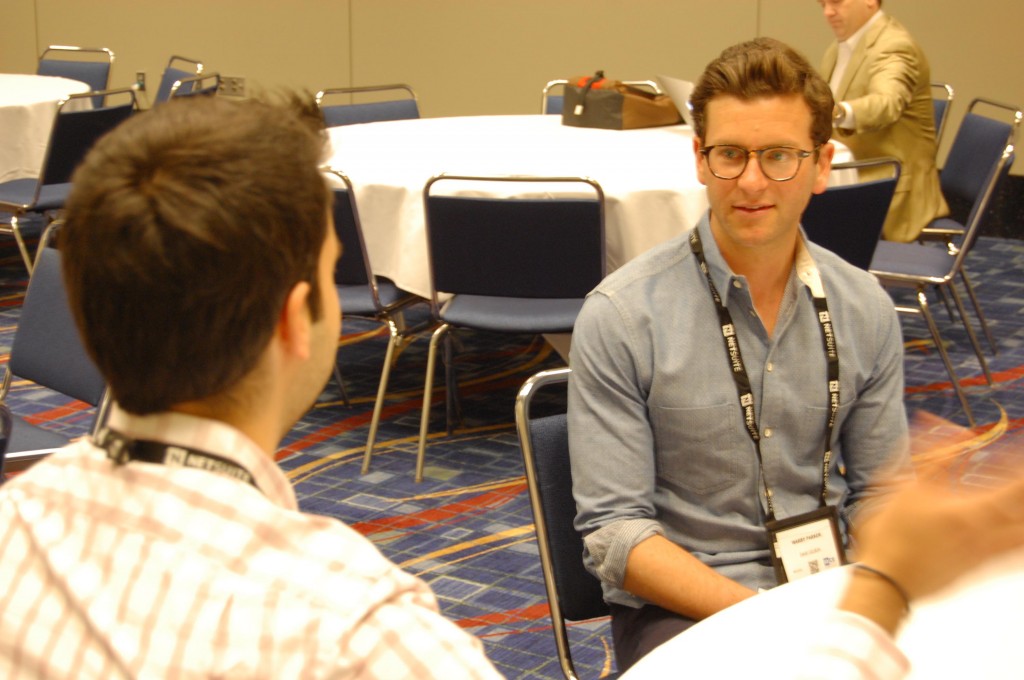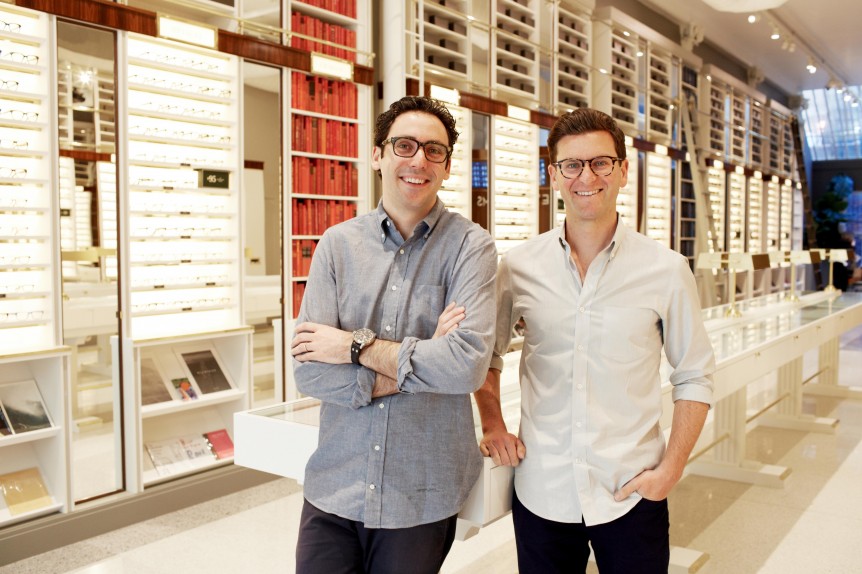Conventional wisdom says friends make terrible business partners. In part two of a three-part exclusive, Warby Parker Co-Founder and Co-CEO Dave Gilboa argues the opposite.
Yesterday, we brought you part one of our exclusive interview with Warby Parker’s co-CEO Dave Gilboa where he spoke about the challenges of internet retail, and how an outstanding customer service can make a business successful. Today, Gilboa explains the dynamic of a co-CEO relationship. To see part three subscribe to our tablet edition to see it on Monday, September 9.
Part 1: How to Sell a Physical Product in a Virtual World
In part one of a three-part exclusive, Warby Parker Co-Founder and Co-CEO Dave Gilboa shares his tips for building an online brand using offline tactics.
Part 2: Are Two CEOs Better Than One?
Part 3: What Millennial Workers Want
Gilboa reveals how Warby Parker attracts and retains top Millennial talent. – Find this in Issue 7 of Forefront on September 9, 2013
George Bozonelos: You’re a Co-Founder and Co-CEO. You share the role with the other Co-Founders. How does that work? What is the dynamic? How do you define your role?
Dave Gilboa: At the start of the company, it was four of us. We were classmates in business school. We were buddies first, and then started talking about this idea and realized that we were all passionate about it. We launched the business together, and during that launch phase were still in school.
At the start, we were four equal partners: four chiefs and no Indians. We talked to a lot of smart people who told us, “Don’t start a company with friends. Don’t start a company with four people. It’s going to end in disaster. You guys aren’t going to talk to each other in a couple of years.”
We realized that there are a lot of smart people who had started businesses together who had the best intentions, but things fell apart for one reason or another. We wanted to make sure that our friendship remained more important than success of the business. We committed that we were going to really invest in over-communicating and ensure that there weren’t issues that people were upset about or allow friction to build up below the surface that would rupture down the road.
From day one, the four of us set up monthly 360-degree feedback sessions where we put one person in the hot seat and didn’t talk about any operational issues that were going on the business. The sessions were designed purely to provide feedback about interpersonal dynamics. We just wanted to make sure that we were being open and honest and having direct conversation with each other, and there weren’t side conversations or negative thoughts that weren’t being voiced.
Then when we graduated from school, there were four of us and we realized that while we had different interests and skills, we were still Wharton MBAs and had in large part had overlapping skill sets. We decided it would make the most sense to have one or two of us continue to lead our organization on a day-to-day basis. We collectively decided that Neil and I were the best complements to each other. We were really focused and interested in and good at different pieces of the business and complemented each other really well.
At that point we explored reporting structures between the two of us that would make sense as we were building our organization. Should one of us be CEO, the other be President? Do we make one person CEO and another person Chairman of the Board? We quickly realized that any scenario where one person was reporting to the other person probably wasn’t going to be sustainable because we started as friends—we had been equals all along, and then all of a sudden having one of us report to the other would create a strange dynamic.
We said, “Well, this might not be a structure that makes sense forever, but why don’t we try setting up a Co-CEO structure since we’re not going to use these titles much anyway?”

There are 12 key functions that we think we need in the business. We have six reporting to me. We have six reporting to Neil. On the functions that are reporting to me, I’m the ultimate decision-maker if there’s ever a disagreement. Likewise, for the functions that are reporting to Neil. Every person in the organization will then only report to one of us so there would be no confusion as to reporting line and who’s the ultimate decision-maker.
Then we also have in our week a one-on-one meeting to provide feedback to each other, again making sure that there aren’t issues that bubble up below the surface.
Bozonelos: That is fascinating. It sounds like there is a lot of candor, a lot of trust and a lot of, “Hey, I’m going to say this, don’t hate me. I value our friendship, so let’s have these open discussions where we don’t take anything personal. We have to take personal aside and just talk about certain things without fear.”
It is great that you put the ground rules in early. It sounds almost like a marriage, for lack of a better term.
Gilboa: Yeah, it does feel that way. We realized that we have to invest in the relationship. We’re also doing this for the first time. We’ve never led an organization of this size, so in a lot of ways we had that opportunity to help each other develop as leaders and really look to each to provide that feedback because otherwise it’s sort of operating in an echo chamber.
Bozonelos: It sounds like you guys gave a lot of thought not only to today, but to tomorrow. Are there times when that over-thinking is sort of a drawback? Where sometimes you just say, “Look, let’s stop thinking about this real quick and take action.”?
Gilboa: I don’t think you can over-invest in culture and team dynamics. We’ve tried to incorporate continuous feedback throughout the entire organization. We do quarterly 360-degree reviews with…
See the rest of Gilboa’s response and more Q&A in Part 3 of this interview. To read Part 3, subscribe to Forefront magazine for free by downloading our app.
 Dave Gilboa is the co-CEO of Warby Parker. Read his bio here.
Dave Gilboa is the co-CEO of Warby Parker. Read his bio here.
 George Bozonelos is the CEO & publisher of Forefront Magazine. Read his Bio here.
George Bozonelos is the CEO & publisher of Forefront Magazine. Read his Bio here.

